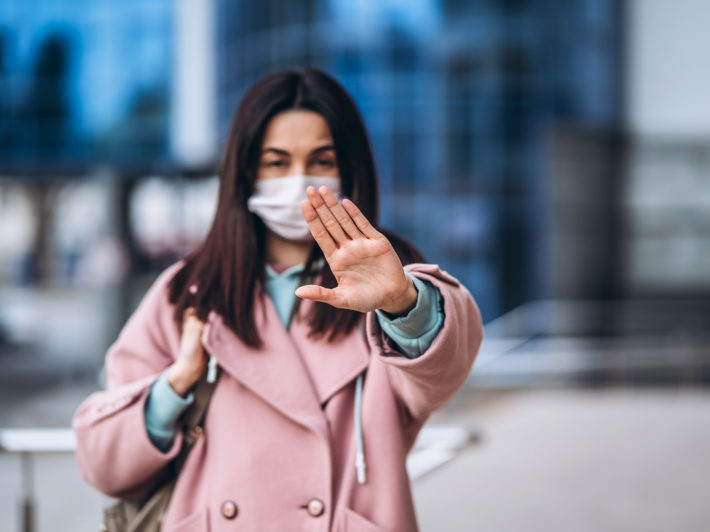
COVID-19 April 6, 2020 Update
On April 2nd, the number of COVID-19 cases reached 1 million worldwide. The US currently has over 300,000 reported cases, more than any other country in the world. Amid the uncertainty around the pandemic, the US is also learning so much more about the novel coronavirus. Epidemiologists and infectious disease experts recently published what they had learned based on existing data in JAMA Viewpoint. Below are some of the highlights.1
How does SARS-CoV-2 spread?
- The major route is between people who are in close contact with one another. It occurs when an infected person produces virus-containing respiratory droplets when coughing, sneezing, or talking, and the droplets land in the mouth or nose of a person nearby, usually within 6 feet.
- It is possible that the droplets can land on an inanimate object and be transferred to another person who comes in contact with the object.
- A contaminated object or surface can easily be disinfected. For example, 70% rubbing alcohol destroys the virus very quickly. Thorough hand-washing is also highly effective in removing viral particles.
What is the case-fatality rate of COVID-19?
- The case-fatality rate—the percentage of deaths among all cases—is currently 1.7% in the US.
- Globally, the rate is 4.7%, but it varies widely by location, such as 0.7% in Germany and 10.8% in Italy.
- The case-fatality rate is changing daily as the method of estimation continues to improve. For example, during the early outbreak (early February) the rate in the first epicenter in China was 5.8%. Today’s estimate is closer to 1.4%.
Is the PCR-based diagnostic tool accurate?
- The PCR-based viral RNA test is overall very sensitive and is currently the primary method used in clinical settings. However, there are certain factors to consider.
- Lower respiratory samples such as minibronchial alveolar lavage are more sensitive than samples taken from a nasopharyngeal swab. Stage of the illness quality of the sample may also affect diagnosis. Read here.
- Repeat testing with samples collected from multiple sites in the respiratory tract would greatly improve the diagnosis.
If I have developed immunity to SARS-CoV-2, how long does it last?
- Preliminary data showed that the antibody IgM and IgG became detectable roughly 5 and 14 days, respectively, after symptom onset.
- In the outbreak of SARS-CoV-1 (a relative of the current SARS-CoV-2) back in 2003, the amount of antibodies peaked at 4 months after symptom onsets and declined gradually that lasted at least 3 years.
- However, as COVID-19 is novel to humans, long-term immune response is yet to be determined.
If I have recovered from COVID-19, can I become infected again?
- There have been cases of patients who were tested negative and discharged from the hospital but days later were readmitted and subsequently tested positive.
- However, since PCR-based viral RNA testing is not 100% sensitive, it is unclear whether those cases received initial false negative results or truly were cases of reinfection.
- From past experiences with other viral outbreaks, reinfection is possible but usually many months or years after the first infection.
How long will social distancing measures remain in place?
- Social-distancing measures are crucial in slowing down surges in infection numbers and help spread out cases over a longer period of time, thereby allowing health systems to better manage patients.
- According to modeling studies, if these measures are prematurely and suddenly lifted, it would lead to an earlier secondary epidemic peak. Experts and policy makers are watching closely daily on the development of COVID-19 and to determine when and how to lift these measures.
- In the meantime, experts are learning whether there are ways that may allow for easing restrictions, such as widespread lab testing to identify asymptomatic cases in order for proactive case management.
Click here to read the JAMA Viewpoint published on April 6th, 2020.
On an encouraging note, Washington State—the first epicenter of the COVID-19 outbreak in the US and the first to implement social distancing measures—appears to be “flattening the curve”:
- The models from University of Washington’s Institute for Health Metrics and Evaluation (IHME) projected that the case-fatality rate would peak in Washington State on April 6th. Afterward, the rate would decline slowly from there.
- Washington State is also able to return more than 400 of the 500 ventilators that it received from the federal government. These ventilators can be used for states that have been hit harder.
To view the IHME projections, click here.
Citation
- Omer SB et al. The COVID-19 pandemic in the US: A clinical update. JAMA. 2020.




